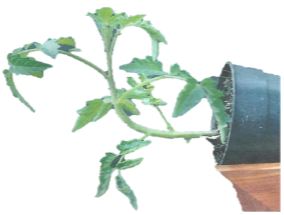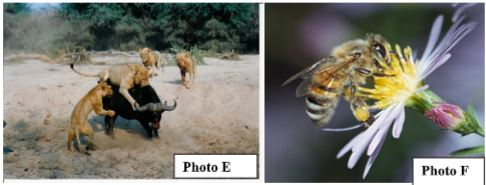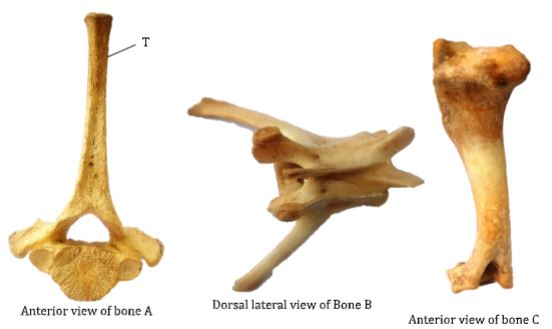BIOLOGY
PAPER 3
PRACTICAL
INSTRUCTIONS TO CANDIDATES
- Write your name, Index number and your other details in the spaces provided above.
- Spend the first 15 minutes of the time allocated to read through the question paper.
- Answer all the questions in the spaces provided only.
- Wrong spelling especially of biological terms will be penalized.
-
- You are provided with solution Q, Solution W, Visiking tubing and a thread. Divide solution Q and W into two halves in separate beakers. Use one half for Procedure 1 and second half for Procedure II.
Procedure 1- Using reagents provided and one half of solution Q, carry out tests to determine the food substance present in solution Q
- Record the procedure, observations and conclusions in the table below.
- Repeat the same procedure using the half of solution W. (10mks)
Test Food
SolutionProcedure Observation Conclusion Starch Q W Reducing
sugarsQ W
Procedure II
(Clean and rinse properly any of the beakers that contained Solution W or Solution Q for use in this procedure) - Tie one end of visking tubing provided with a thread tightly.
- Measure about 5ml of solution Q into the visking tubing (Stir the solution thoroughly before use).
- Tie the other end tightly to ensure that there is no leakage.
- Immerse the visking tubing and its content into a beaker containing solution W.
- Allow it to stand for 20 minutes.
- After 20 minutes empty the content of the visking tubing into a clean empty beaker.
- Use the solution that was in the visking tube to test for starch and reducing sugars. Record the observations and conclusions in the table below:
(4mks)Test Observations Conclusions Starch test Reducing sugars test - Name the physiological process being investigated in the experiment. (1mark)
- Which structure in the living organism is represented by the visking tubing? (1mark)
- Account for the observation made in the table (b) above. (2marks)
- You are provided with solution Q, Solution W, Visiking tubing and a thread. Divide solution Q and W into two halves in separate beakers. Use one half for Procedure 1 and second half for Procedure II.
-
- Study the photograph below. The specimen had been placed in adequate light at a horizontal position for one week.
- What was the aim of this experiment? (1 mark)
- What would be the result if seedling is placed on a working klinostat? (1 mark)
- Explain how the growth curvature occurred. (3 marks)
- Study the Photographs below and answer the questions that follows :
- Name the type of relationship in Photograph E and F:
Photograph E ……………………………………………………………………….(1mk)
Photograph F ………………………………………………………………………(1mk) - What is the importance of the relationship taking place in Photograph E.(1mk)
- Using observable features only explain two ways in which the flower is adapted for the activity taking place in Photograph F. (2mks)
- Name the type of relationship in Photograph E and F:
- Study the photograph below. The specimen had been placed in adequate light at a horizontal position for one week.
- The photographs below shows bones obtained from different regions of a mammalian body. The photographs are in different views.
- Identify the bones. (3 marks)
A……………………………………………………………
B……………………………………………………………
C…………………………………………………………… - Name the regions from which bone B was obtained from. (1 marks)
- State two distinguishing features of the bone in photograph labeled B. (2 marks)
- State the significance of the part labeled T in the photograph of bone A. (1 mark)
- With reason state the type of joint formed at the distal and proximal ends of specimen C. ( 4 marks)
- Distal end
Reason - Proximal end
Reason
- Distal end
- Name the bone that articulates with the proximal end of the bone in photograph labelled C. (1 mark)
- Identify the bones. (3 marks)
CONFIDENTIAL
Each candidate should be supplied with the following;
- Four test tubes in a test tube rack
- Visiking tubing
- Two pieces of thread
- Two 50 ml empty beakers
- 10 ml measuring cylinder
- Two labels
- About 20ml Starch solution Labelled Solution Q -Should be prepared using warm water)
- About 50ml Concentrated glucose solution labelled solution W
Each candidate should have access to the following
- .Iodine solution
- Benedict’s solution
- Source of heat
MARKING SCHEME
-
- You are provided with solution Q, Solution W, Visiking tubing. Divide solution Q and W into two halves. Use one half for Procedure 1 and second half for Procedure II.
Procedure 1
Using reagents provided and one half of solution Q; Carry out tests to determine food present in Q. Record the Procedure, Observations and Conclusions in the table below. Repeat the same procedure using the half of W. (10mks)
Test Food
SolutionProcedure Observation Conclusion Starch Q To the solution in a test tube, Add iodine solution;
Rej; Iodine only
Blue –black Starch present W Brown colour Starch absent Reducing
sugarsQ To the solution in a test tube; Add Benedict’s solution and heat to boil.
Rej :wrong spelling of reagent
Use of water bath not providedRemain blue Reducing sugars absent W Brown/Orange
(Accept; single colour)Reducing sugars present
Procedure II
Tie one end of visking tubing provided with a thread tightly. Measure about 5ml of solution Q into the visking tubing (Stir the solution thoroughly before use). Tie the other end tightly, Ensure there is no leakage. Immerse the visking tubing and its content in a beaker containing solution W. Allow it to stand for 20 minutes. After 20 minutes empty the content of the visking tube into a clean empty beaker. (Clean and rinse properly any of the beakers which contained Solution W or Solution Q for use in this procedure) - Use the solution to test for starch and reducing sugars. Record the observations and conclusions in the table below:
(4mks)Test Observations Conclusions Starch test Blue –black Starch present Reducing sugars test Yellow/orange/ brown
Accept any one colourReducing sugars test - Name the physiological process being investigated in the experiment. (1mark)
- Diffusion
- Diffusion
- Which structure in the living organism is represented by the visiking tubing? (1mark)
- Cell membrane/plasma membrane;
- Cell membrane/plasma membrane;
- Account for the observation made in the table (b) (i) above.(2marks)
- Reducing sugars /glucose molecules moved / diffused; across the visking tubing; due to their small size/ through the small pores of visking tubing .
- Name the physiological process being investigated in the experiment. (1mark)
- You are provided with solution Q, Solution W, Visiking tubing. Divide solution Q and W into two halves. Use one half for Procedure 1 and second half for Procedure II.
-
-
- To investigate Geotropism;
- The plant would not bend/ plant will continue to grow horizontally
- Auxins move to / diffuse and accumulate on the lower side; promoting faster growth / elongation; hence the upward bending; the shoot is positively Geotrophic;
-
- Name the type of relationship in Photo E and F:
Photograph E: Predation (1mk)
Photograph F: Symbiosis (1mk) - What is the importance of the relationship taking place in Photo E. (1mk)
- To maintain the population of the prey and predator at carrying capacity of the habitat.
- Using observable features only explain two ways in which the flower is adapted for the activity taking place in Photo F. (2mks)
- Flower funnel shaped/conical shaped to provide a landing platform for the be;
- Brightly coloured/conspicuous to attract the bee;
Reject nectaries, scented,stigma, pollen grains and filaments features (are not observable in the photo)
- Name the type of relationship in Photo E and F:
-
-
- A – thoracic vertebra✔1 rej: Thoracic bone
B – Lumbar vertebrae✔1 rej. Lumbar bone
C – Femur ✔1 - Abdominal region✔1 acc: lumbar region
- Long transverse processes
Short broad neural spine
Extra processes / metapophysis
Large centrum any 2 – two marks - Increase surface area for attachment of muscles✔1
-
- Hinge joint ✔1
Reason: Presence of condyles✔1 / grooves which articulate with depression of next bone - Ball and socket joint ✔1
Reason: Head shaped like a ball✔1 / rounded end
- Hinge joint ✔1
- Pelvic girdle✔1
- A – thoracic vertebra✔1 rej: Thoracic bone
Download Biology Paper 3 Questions and Answers with Confidentials - MECS Cluster Joint Mock Exams 2021/2022.
Tap Here to Download for 50/-
Get on WhatsApp for 50/-
Why download?
- ✔ To read offline at any time.
- ✔ To Print at your convenience
- ✔ Share Easily with Friends / Students




